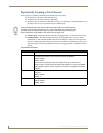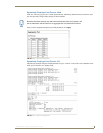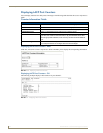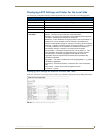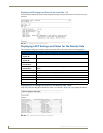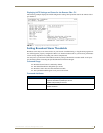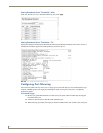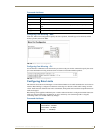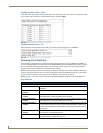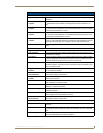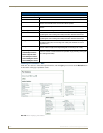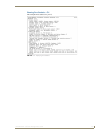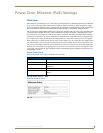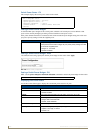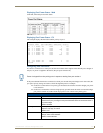
Port Configuration
100
NXA-ENET24 - Software Management Guide
Configuring Rate Limits - Web
Click Rate Limit, Input/Output Port/Trunk Configuration. Set the Input Rate Limit Status or Output Rate Limit
Status, then set the rate limit for the individual interfaces, and click Apply.
Configuring Rate Limits - CLI
This example sets the rate limit for input and output traffic passing through port 3 to 600 Mbps.
Showing Port Statistics
You can display standard statistics on network traffic from the Interfaces Group and Ethernet-like MIBs, as
well as a detailed breakdown of traffic based on the RMON MIB. Interfaces and Ethernet-like statistics display
errors on the traffic passing through each port. This information can be used to identify potential problems
with the switch (such as a faulty port or unusually heavy loading).
RMON statistics provide access to a broad range of statistics, including a total count of different frame types
and sizes passing through each port. All values displayed have been accumulated since the last system reboot,
and are shown as counts per second. Statistics are refreshed every 60 seconds by default.
RMON groups 2, 3 and 9 can only be accessed using SNMP management software such as HP OpenView.
Port Statistics
FIG. 104 Web - Output Rate Limit Port Configuration
FIG. 105 CLI - Output Rate Limit Port Configuration
Port Statistics
Interface Statistics
• Received Octets: The total number of octets received on the interface, including framing
characters.
• Received Unicast
Packets:
The number of subnetwork-unicast packets delivered to a higher-layer protocol.
• Received Multicast
Packets:
The number of packets, delivered by this sub-layer to a higher (sub-)layer, which
were addressed to a multicast address at this sub-layer.
• Received Broadcast
Packets:
The number of packets, delivered by this sub-layer to a higher (sub-)layer, which
were addressed to a broadcast address at this sub-layer.
• Received Discarded
Packets:
The number of inbound packets which were chosen to be discarded even though
no errors had been detected to prevent their being deliverable to a higher-layer
protocol. One possible reason for discarding such a packet could be to free up
buffer space.
• Received Unknown
Packets:
The number of packets received via the interface which were discarded because
of an unknown or unsupported protocol.
• Received Errors: The number of inbound packets that contained errors preventing them from
being deliverable to a higher-layer protocol.



